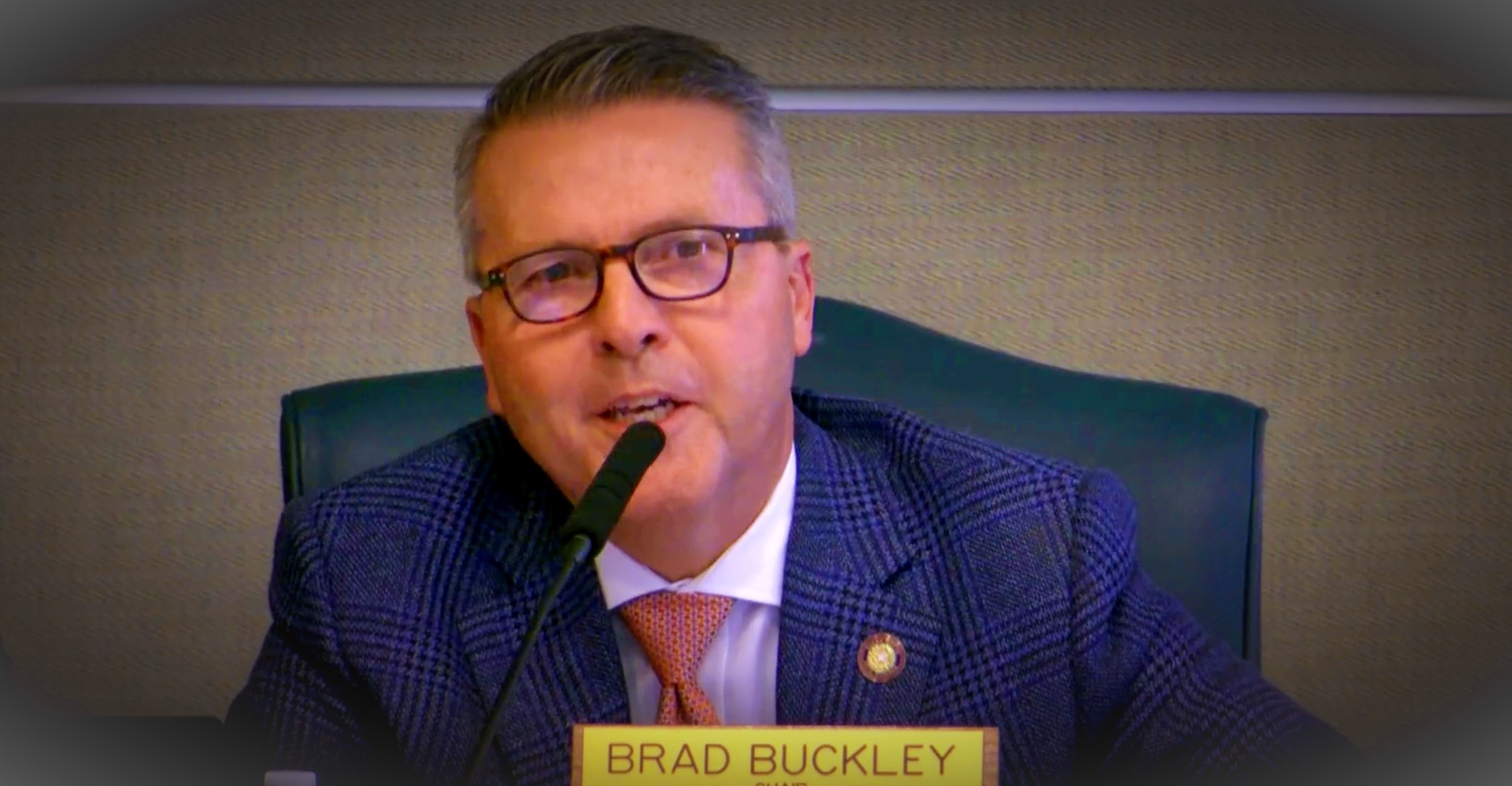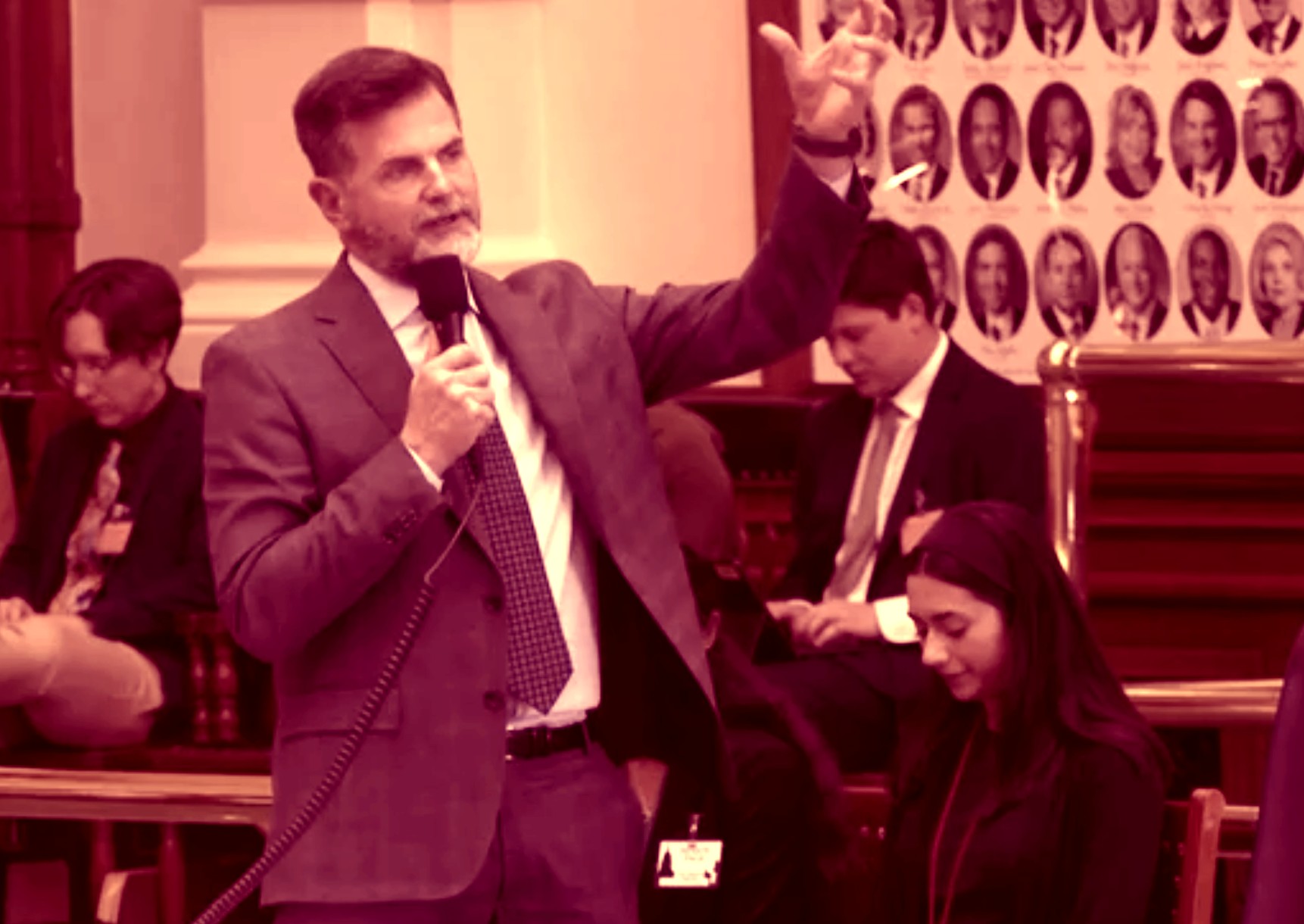Unpacking Cormac McCarthy
One cold morning in December 2007, I was among those shivering outside Cormac McCarthy’s adobe mansion in Santa Fe. The first thing you notice about McCarthy’s front door is that it’s formidable—it looks like it came from an old Spanish mission, or possibly a fort. It’s a good, solid door meant to keep people out. It’d take a battering ram to break through.
Fortunately, McCarthy was expecting us, so he let us inside. A few weeks earlier, he had quietly let it be known that he was ready to dispose of his literary papers. Key universities, and some individuals, competed for the archive. McCarthy, perhaps owing to his long friendship with Bill Wittliff, chose the Wittliff Collections at Texas State University-San Marcos, where I work as a curator.
For many years, no one was quite sure if McCarthy had an archive. He is widely viewed as a presiding genius of American literature, but he is also a legendary recluse, having granted a handful of interviews in a half-century of writing.
McCarthy grew up in Tennessee, and he published four critically acclaimed novels set in the South during the 1960s and 1970s. Each sold poorly, and he lived at the edge of poverty. A fiercely private man, he refused to do book signings, lectures, or interviews. One former wife, British singer Anne DeLisle, once lived with McCarthy on a pig farm. She recalled that, “Someone would call up and offer him $2,000 to come speak at a university about his books. And he would tell them that everything he had to say was there on the page. So we would eat beans for another week.”
In 1981, McCarthy bought a house in El Paso after receiving a MacArthur Foundation “genius” grant. There he began writing books set in the Southwest. His 1985 novel, Blood Meridian, received little attention at the time but is considered a classic today. In 1992, McCarthy’s fortunes changed with All the Pretty Horses, which made the best-seller list and won the National Book Award. McCarthy did not show at the ceremony to claim his prize.
In the last decade, McCarthy sealed his status as one of America’s top authors with two hugely popular works. His 2005 novel, No Country for Old Men, became an Academy Award-winning film. In 2007, The Road won the Pulitzer Prize and became an Oprah’s Book Club pick. McCarthy shocked longtime fans by agreeing to appear on Oprah’s daytime show.
A few months after the Oprah appearance, we showed up at McCarthy’s house to claim his archives. As we walked inside, all I could think about were the stalkers out there who’d give anything to change places with us. McCarthy’s success, combined with his reclusiveness, has created a kind of frenzy around him. Back in El Paso, fans and journalists cruised his street hoping for a glimpse of the great author. One artist made a series of paintings called “Cormac McCarthy’s House.” A reporter even began digging through McCarthy’s trash, searching for clues about his personal life. In the 2000s, McCarthy moved to this hilltop retreat in Santa Fe.
McCarthy shows a courtly air as we meet him. He speaks in a soft Tennessee accent. It’s easy to imagine him as a Southern gentleman. After coffee and some polite chatter, we load two cargo vans full of sealed boxes. Then we drive straight back to San Marcos, arriving sometime after 2 in the morning.
When news of the Wittliff Collections’ McCarthy acquisition broke a few weeks later, the story made newspapers around the world. The question many scholars and fans asked was, what will the archives reveal about this intensely private man?
Recently I had a chance to find out for myself. In preparation for the Wittliff’s new exhibit, Cormac McCarthy: Selections from the Permanent Collection, I spent several days sifting through the nearly 100 boxes that comprise the McCarthy papers.
Archives offer a uniquely rich resource, though too few literary scholars use them. Most academics these days are too enamored with critical theory to concern themselves with a writer’s actual intent. For those of us interested in writers and the writing process, nothing beats access to the archives. Here you get an intimate, behind-the-scenes look at a writer’s life, shedding light on everything from early struggles to how significant works came into being.
I wanted to investigate McCarthy’s relationship with his longtime editor, Albert Erskine. When McCarthy began writing in the early 1960s, Erskine was already a legend, having edited William Faulkner, Eudora Welty and Ralph Ellison. Erskine would have been a mentor to McCarthy. I knew from studying other archives that many young writers are consumed with insecurities. Self-confidence comes later. I was curious to see if McCarthy fit this pattern, and what he might’ve learned from Erskine.
For McCarthy’s first novel, The Orchard Keeper (1965), I saw in the archive’s first box that there are four letters from McCarthy to Erskine. Curiously, nothing from Erskine to McCarthy. I realized that the letters involve nothing more than routine copyediting. One is about apostrophes, another about pagination. The most interesting is McCarthy’s letter defending his seemingly inconsistent use of a hyphen. McCarthy’s explanation sprawls into a brilliant, if dense, three-page disquisition on the art and science of English grammar.
Surely the letter impressed Erskine. But in the grand scheme of things, a letter about a hyphen is pretty small potatoes as insight into McCarthy’s art or his relationship with Erskine. You get the sense that there must’ve been more letters. We have no way of knowing what happened to those, but considering McCarthy’s private nature, my guess is that they ended up in his fireplace. Or perhaps in the shredder.
Having no luck with the correspondence, I began looking through McCarthy’s early manuscripts, searching for clues about how he and Erskine worked together. Finally, in a draft of McCarthy’s third novel, Child of God, I noticed some assertive comments in the margins. These, I realized, were in Erskine’s hand.
Child of God, if you haven’t read it, is one of McCarthy’s early “Southern” novels. Published in 1973, it tells of a cross-dressing, cave-dwelling serial killer and necrophiliac named Lester Ballard. In one scene, Ballard discovers a dead couple in a parked car. This proves to be his entrée into the world of necrophilia. McCarthy describes Ballard’s halting, almost comic reactions until, finally, he becomes a “crazed gymnast laboring over a cold corpse. He poured into that waxen ear everything he’d ever thought of saying to a woman.” Erskine has written in the margin: “Mac: Here I would expand; describe; too abrupt. Done right, this could have a real impact—dimension.”
I consulted my copy of Child of God. Yep, McCarthy had ignored Erskine’s advice. The scene appears in the book exactly as in this draft. I kept reading through the manuscript. Erskine has made few comments, and McCarthy has seemingly ignored each. Finally, near the end of the novel, I hit paydirt.
On pages 136 and 137 of the manuscript, McCarthy has created a scene where Lester Ballard, apparently full of remorse for his crimes, walks out into the forest, and with “one swift slice of the knife” castrates himself. McCarthy, as usual, seems more interested in describing the appearance of the severed testicles than in illuminating the workings of Ballard’s mind.
Here Erskine reacts with his strongest comments yet. In the margin, he writes, “No! Talk to me about this.” Below he adds, “Mac, it seems to me arbitrary; not set up. Ok if you motivate it earlier, somehow … foreshadow it, or you’ll lose the reader.”
I wanted to jump and shout. I’d found a deleted scene in Child of God. What’s more, I found evidence that McCarthy had listened to some of Erskine’s advice. I felt that I’d entered into a privileged space where, instead of being an outsider, I’d become an intimate observer of an author’s work. I joined the small circle of people who knew exactly what Child of God contained beyond the published version.
Emboldened, I began perusing other manuscripts in the McCarthy papers. One thing you see right away in McCarthy’s writing is that his prose, even in its primordial form, carries an electric charge like no other. It’s not just raw talent that makes him successful. McCarthy has an incredible work ethic. He relentlessly edits and revises his manuscripts, and he will spend many years—even decades—working on a book before he feels it’s good enough to be published.
After looking at several manuscripts, I felt like I’d gained a decent understanding of how McCarthy works, but had learned little about the man. This, I suspect, is how McCarthy wants it. He’s always sought to deflect questions and steer people toward the writing.
Some other options are available for researchers. The Wittliff Collections hold a number of important secondary collections on McCarthy. Chief among these is the J. Howard Woolmer Collection. Woolmer is a rare-book dealer who became McCarthy’s friend in the 1960s. The two exchanged occasional letters, and Woolmer has preserved them for posterity. You can read the letters at the Wittliff.
Two things stand out about McCarthy’s personal letters. First, the man has impeccably neat handwriting. Second, he writes in an easygoing, personable tone. He doesn’t come across as a reclusive, highbrow literary sort. In his letters to Woolmer, McCarthy gives a fair accounting of his often-difficult struggle to find an audience for his work.
One of the most fascinating letters is from July 15, 1981, sent a few days before McCarthy turned 48. He was in a down period. He’d separated from his second wife, most of his books were out of print and he was struggling to make ends meet. In the letter, he thanks Woolmer for inquiring about his literary affairs. McCarthy writes, “I’m more than happy for anybody to interest themselves, although I should warn you it’s a long & tiresome take at best.” McCarthy goes on to tell Woolmer, “My agent for several years was Candida Donadio …”
I stop there. This is from the man who, as legend had it, went most of his career without having an agent? The mention of Candida Donadio is stunning. She was not just an agent, but one of the best in the business. Her other clients included Thomas Pynchon, Phillip Roth and Joseph Heller. This new information shakes up McCarthy’s image as a man who toiled in isolation to avoid becoming corrupted by literary society.
I read the rest of the letter, but as McCarthy had promised, it is a long litany of complaints about his lack of success. The letter is painful, but with the passage of time, you can smile at it. Four months after he wrote it, McCarthy received his MacArthur grant, which rescued him financially and allowed him to reinvigorate his career by moving to the Southwest.
McCarthy’s interest in film is evident in many of his letters to Woolmer. McCarthy enjoyed early success as a screenwriter when PBS filmed his script for The Gardener’s Son in 1977. After that, he apparently caught the screenwriting bug, and he spent the next decade or so writing other scripts. He acquired a film agent in addition to his literary agent. There’s no indication that any of his scripts were produced or even sold.
Returning to the McCarthy archive, I begin to look more closely at the screenplays. Though McCarthy couldn’t sell them, that doesn’t mean that they are failures. A few of those early scripts evolved into his biggest successes as a novelist. His acclaimed Border Trilogy, which began with All the Pretty Horses, was inspired by a screenplay he completed in 1978.
Another screenplay, No Country for Old Men, was finished in the 1980s. Yet nothing happened with it for nearly 20 years, until McCarthy rewrote that story as a novel, published in 2005. The early version of No Country for Old Men is unusual by McCarthy’s standards because it contains a conventional happy ending. Sheriff Bell and a very-much-alive Llewelyn Moss team up in a climactic gun battle to take down the Evildoer—named “Ralston” in this draft. Having the good guys prevail was an obvious ploy to a potential buyer, another indication that McCarthy was more market-oriented than his legend would have it.
When I’d begun my research in the McCarthy archive, I’d pretty much believed in the mythological version of him. I viewed McCarthy as the ultimate literary outsider, a man immune to most commercial considerations. As he’d told Oprah on TV, he didn’t really care whether millions of people read his books. The portrait of McCarthy that emerges in the archives is more complex. McCarthy had briefly allowed me into his living room that cold December morning, but it was the archives that allowed me to wander around the rooms of his house.
Steve Davis is a curator at the Wittliff Collections. He is the curator of Cormac McCarthy: Selections from the Permanent Collections, on display through Dec. 12 at the Wittliff.


